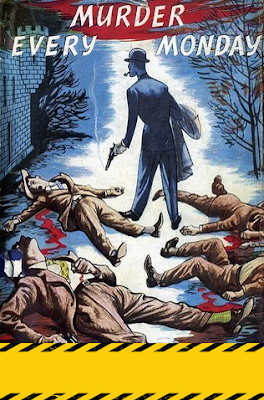"You must go on a long journey before you can really find out how wonderful home is."
☄ That is the essence of this book, the second one - in term of publication date - to the Moomin series created by the inimitable Tove Jansson, and translated from Swedish by Elizabeth Portch. Moomintroll feels the urge to take on a journey far away from home, to see the world, to take on challenges, to do good things for others. But when he has had all these, the one thing he was longing most were... home and family. Isn't that what we all experience?
☄ This book picked up where we left in the first book: The Moomins and the Great Flood. The Moomins family had decided to stay on the valley where the house Moominpappa had built up ended during the flood. Now the family are settling in Moominvalley, with the addition of Sniff (the little creature they encountered in first book) who is living with them now. Sniff finds a beautiful cave while he and Moomintroll are following a path in the forest, and Moomintroll goes pearl-fishing in the sea. The next day they find the pearls, which they have hidden inside the cave, now are arranged in the shape of a star with a tail. The Muskrat, a philosopher who's also living with the Moomins, tells them they are shaped like a comet. So Moomintroll and Sniff are taking a journey to the Faraway Lonely Mountains, where the Professors at the Observatory will tell them more about it.
☄ Long story short, after a long and challenging journey, the Professors tell them exactly when a huge comet would hit the earth, in a few days. Now Moomintroll and Sniff need to go back home ASAP to.... well, they don't know exactly what to do, but Moominmamma would surely know what to do then. If only they could arrive just in time. Can they do that? Will the comet destroy their beloved Moominvalley?
☄ Along the adventure, some new characters were added to spice up the story up. We were introduced first to Snufkin, a nomad who loves playing music with his harmonica, and defies rules and authority. Then there's the Hermulen, who is an avid stamp collector, and ignorant of anything elese. One particular character gives Moomintroll a distraction from his mission - a beautiful Snork Maiden whom Moomintrol had saved from poisonous bush. This made me reflect on Moomintroll's actual age. He seemed to be of earlier age of five or seven years old back in the first book (where Moominmamma told him to wear dry sock after he wetted his feet in the swamp) but here he's having a crush - albeit a childish one - on Snork Maiden. Maybe the Moomins are ageless?
☄ Overall, Comet in Moominland is much more entertaining and complex than its predecessor. What I love most about it is the level of trust showed from Moomintroll and his parents, particularly Moominmamma. Even when the danger was near, Moominmamma and Moominpappa refused to evacuate with hteir neighbors, because they believe Moomintroll would come home. They never considered the possibility of their son going somewhere safer without them. No, they just knew that Moomintroll was coming home. Likewise for Moomintroll, he repeated many times to his friends that Moominmamma would know what to do. He never thought his parents would have evacuated with their neighbors. No, he just had to get home, and everything would be okay. That's a huge amount of confidence and a strong bond of love. I am so lucky to have the same kind of family! We were able to get through hardship and sorrow because we did it in love and trust of each other. This is a book with a fun adventure, that will warm you heart through.
Rating: ⭐⭐⭐⭐
Read for:

























































